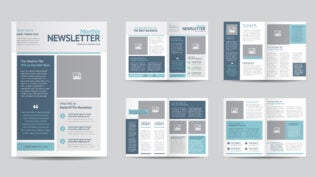
A lead magnet is one of the most powerful tools to increase lead generation. According to WPforms, 50% of marketers who start using lead magnets report higher conversion rates.
All over the internet, you can find blog posts with examples you can use as lead magnets. But just because it worked for them doesn’t mean it’ll work for your business.
A good lead magnet in my mind is like a temple and a temple can’t stand without its 4 main pillars. If just one of them isn’t functioning well the entire temple will fall.
The problem is by simply copying another business their lead magnet you run the risk of pillars not functioning well. This is why it’s important to know exactly what these 4 pillars are so you can use them to create a high-performing lead magnet.
The 4 pillars of creating an effective lead magnet
Pillar #1: Research
An effective lead magnet can’t be created without doing research. If you don’t know what your target audience’s pains and needs are the chances of making a lead magnet that will help with increasing your conversion rate is zero.
This is why it’s always important to create an in-depth customer avatar and have their future roadblocks defined.
You start by asking yourself these questions:
- What are the roadblocks in their way?
- What can you provide to help them get over these roadblocks?
- What fears are holding them back?
These questions should already be answered when making your main product but what you’re going to do is base your lead magnet on one of these roadblocks and take away the fear of them.
Pillar #2: Practicality
A lead magnet should be practical.
One of the most popular lead magnets used by online businesses is the ebook. The problem is that a lot of ebooks contain information that isn’t practical at all or can’t be used immediately.
Imagine your target audience wants to learn how to build a computer from scratch and you have 2 lead magnets to offer them.
A free toolkit they can use for building the computer and a 20-page ebook explaining the history of the computer. Which one would you prefer?
An effective lead magnet gets you 1 step closer to your goal. It should solve a problem that your target audience runs into and lead to a “quick win”.
This is why basing your lead magnet on getting over a roadblock will always result in a higher-performing lead magnet.
Pillar #3 Easily consumable
An effective lead magnet is easy to consume for the target audience and meets them where they’re at.
This is why it’s important to know exactly who your ideal target audience is because the performance of your lead magnet will depend on things like their intellect, their speech, and worldview.
You need to ask yourself questions such as:
- Is my style of communicating in line with my target audience?
Don’t talk like a chemical engineer to people interested in skateboarding. - Am I going against their worldviews?
If your target audience thinks money is the root of all evil showing pictures of yourself in a private jet or Bentley on your opt-in page probably isn’t beneficial. - Is their knowledge about the subject at the level that my lead magnet can help them?
You can offer a solution for step 5 but f they’re at step 2 there isn’t any direct value.
You might get the email address without this pillar in some instances but chances of them being engaged will be a lot lower.
Pillar #4 No downside
Risk is an enormous factor when it comes to sales and other types of conversions.
In the book, Predictable Irrational by Dan Ariely, he talks about a study that was done where a tattoo shop offered free tattoos.
There were enormous lines in front of the shop after the word got out about the free tattoo promotion. They did a survey in the line and asked if they’d get the same tattoo if it wasn’t free.
68% said they wouldn’t get that same tattoo.
Dan Ariely called this the zero price effect which is based on the concept that people are more likely to take action when there’s no downside.
This is why high-performing lead magnets tend to have no downside and it’s basically a best practice to give them away free but it’s important to remember that there can be more downsides than just a financial one.
A few examples can be:
- Waste of time
- Decrease in status
- Internet safety
This is why it’s important to list all the things that can potentially be seen as downsides and start to address them.
Final words
A great lead magnet can be the first step to increasing the lifetime value of a prospect so instead of neglecting the process of creating a lead magnet by just copying another website I’d suggest you take it seriously.
Does this mean you should never look at a blog post listing example? No, but you have to realize that these lead magnet examples are meant to inspire you not to be recklessly “cloned”.
1691 Views














